Big change is coming to Boise fast as 2 tech giants invest $16 billion. What to expect
Two of the biggest and most expensive projects in Idaho’s 133-year history are beginning to take shape as Micron and Meta lay the foundations for Micron’s $15 billion semiconductor plant and Meta’s $800 million data center.
The projects will help shape the future of the ever-growing Treasure Valley, and they have already brought the valley into national conversations over the country’s position in the global technology race.
Micron’s $15 billion fabrication plant, or fab, is one of 82 new semiconductor projects announced across the country since the passage of the federal CHIPS and Science Act in August 2022, according to the Semiconductor Industry Association.
The CHIPS Act provides subsidies to boost American manufacturing of semiconductors, which are used in technology from smartphones to refrigerators, and reduce the dependence on other nations such as China.
Micron is building the fab on its headquarters campus in Southeast Boise. The fab would be the United States’ first dynamic random-access memory, or DRAM, manufacturing plant built in the last 20 years, according to Scott Gatzemeier, Micron’s corporate vice president of U.S. expansion.
“It’s incredibly exciting to bring manufacturing back to the U.S.,” Gatzemeier told the Idaho Statesman.
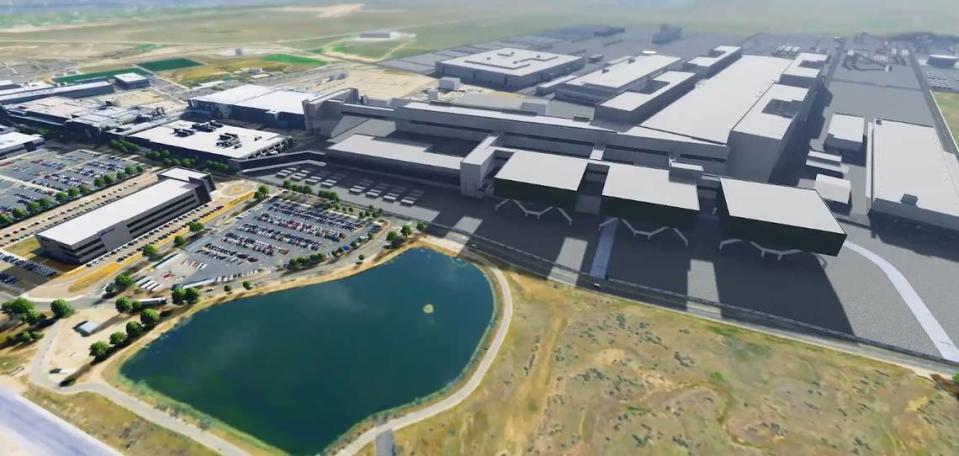
Meta’s project aims to expand the company’s data infrastructure with its new Kuna Data Center at the northeast corner of Cole and Kuna Mora roads.
The center would be its 15th in the United States and the 19th in the world and would support the company’s Facebook, Instagram, WhatsApp and other services, according to prior Idaho Statesman reporting.
“(The services) support Meta’s mission to give people the power to build community and bring the world closer together,” according to Meta’s Facebook page for the Kuna Data Center.
Both projects bring massive investments to the Treasure Valley and promise further economic and demographic expansion.
Over 4,500 construction workers will be needed for the two developments temporarily squeezing the supply of skilled labor for other work.
The two companies will differ vastly as permanent local employers. Meta says it will employ just 100 workers at the data center. Micron has said its fab eventually will employ 2,000 people and lead other employers to create 15,000 additional jobs, including suppliers, contractors and others around Idaho.
Some other employers are already preparing. “We look forward to playing a crucial role,” Diversified Fluid Solutions, a Micron supplier, posted after Micron announced the fab. Diversified Fluid Solutions’ German parent company, Exyte, is opening a Boise office that it says will add about 100 engineering jobs to the local economy.
“There’s going to be more people in the community, there’s going to be more restaurants, more grocery stores, more dentist offices,” Gatzemeier said. “(The Micron expansion) just drives economic activity at a large scale.”
The two companies are ramping up construction through 2024 and 2025 with the aim of going live in 2026.
Data for Facebook, Instagram, WhatsApp
Construction on Meta’s $800 million Kuna Data Center is already well underway.
Crews started putting up steel in February and will be placing exterior concrete panels on the first building in April, according to Meta spokesperson Melanie Roe. Major roadway improvements are complete, and the company has started putting in underground facilities for the second building.
“Beams are being placed and secured at the Kuna Data Center,” according to a Meta Facebook post from late February. “The Kuna Data Center is coming to life!”
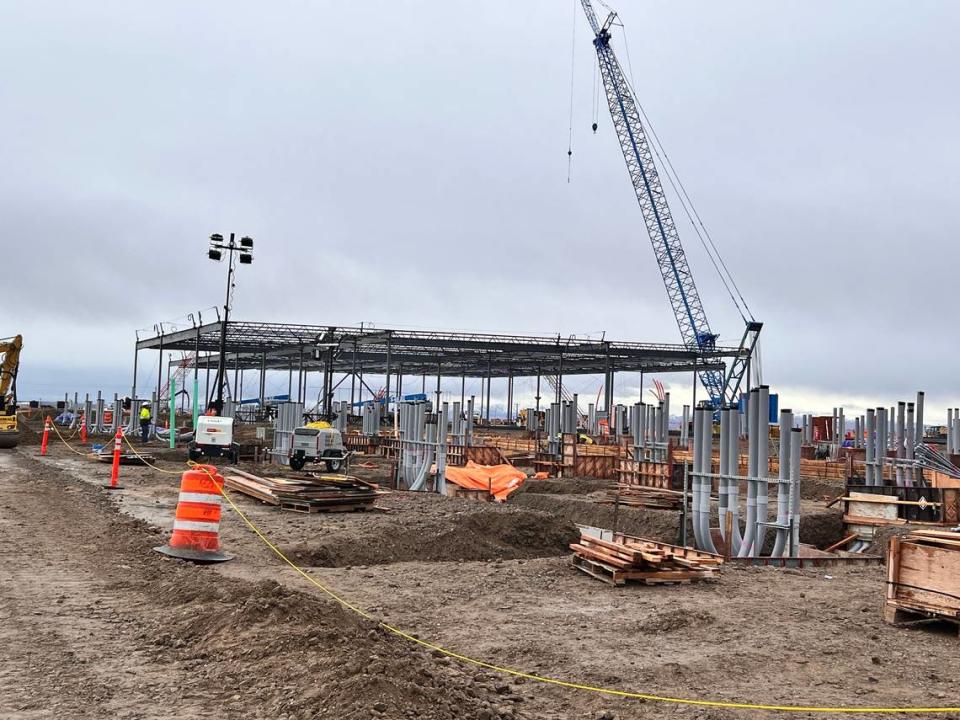
Meta’s partners on the development include Colorado-based Hensel Phelps Construction and Boise’s Engineered Structures Inc.
The data center will employ 1,000 trade workers at peak construction, according to Meta.
For construction workers interested in helping build the site, Roe pointed toward Hensel Phelps.
But the data center, which would clock in at nearly 1 million square feet, is not the only development Meta plans for Kuna.
“Meta has made a commitment to fund a $70M+ new water and sewer system for Kuna,” according to a fact sheet from Meta. “The infrastructure will be constructed by Meta contractors and dedicated to the city of Kuna to own and operate. When constructed, this system will be part of the infrastructure backbone to serve the recently annexed eastern side of the city.”
The company plans to use 100% renewable energy for the data center and is helping build the 200-megawatt Pleasant Valley Solar project, about halfway between Boise and Mountain Home, in partnership with Spain’s Matrix Renewable and rPlus Energies of Salt Lake City. It would be the largest solar site in Idaho Power’s service territory, according to a press release from Matrix.
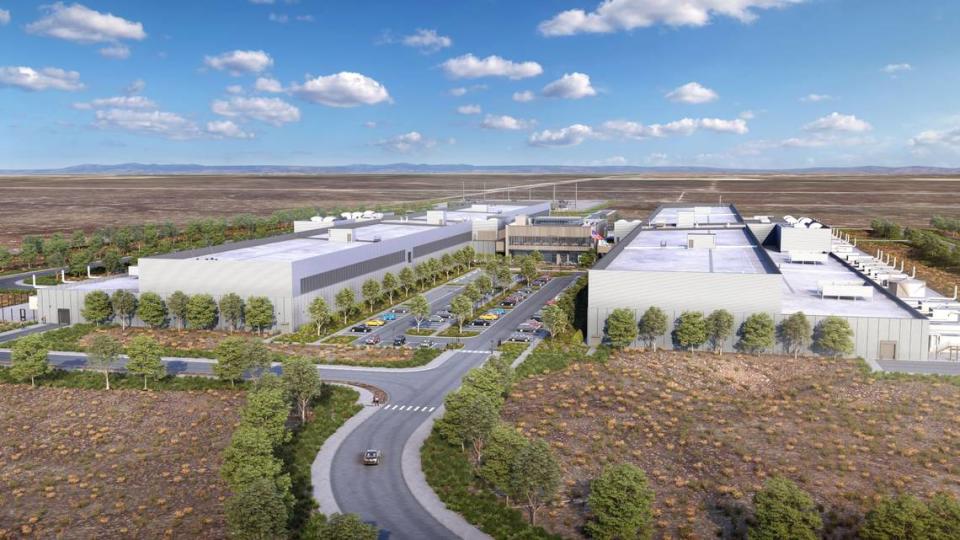
Micron brings memory manufacturing back to U.S.
Micron’s 600,000-square-foot fab, which is about the size of 10 U.S. football fields, broke ground in September 2022. Crews have poured over 34,000 cubic yards of concrete since October and have been laying down steel and rebar “very aggressively,” Gatzemeier said.
“Sometimes I think there’s more rebar in there than there is concrete,” Gatzemeier said. “It’s pretty massive.”
Driving past the site now, you’ll see large cranes and earthmoving equipment. Later this spring, the company will start going vertical, Gatzemeier said. Crews are scheduled to make the west side of the fab weather-tight by October. Micron expects to install semiconductor equipment toward the end of 2025.
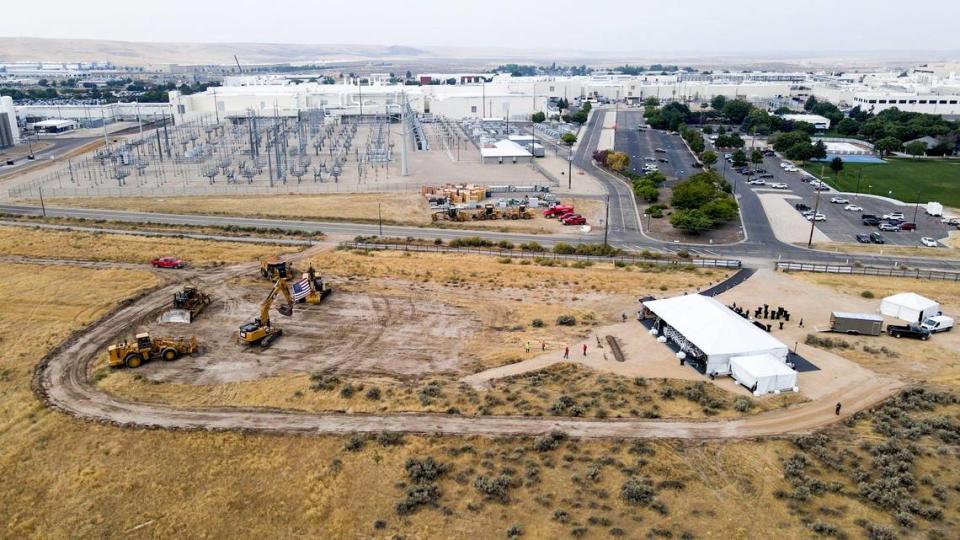
“That’s when we start processing wafers, with (the) first wafers out coming in 2026. Then we’ll ramp the fab for volume capacity throughout the rest of the decade,” Gatzemeier said.
Some construction industry insiders worry that the fab could monopolize the region’s trade workers and laborers — especially with Meta’s project going up at the same time.
There are already 500 construction workers on site at Micron. That will rise to 3,700 at peak construction, Gatzemeier said.
Micron hired clean-room constructor Exyte as its general contractor. Gatzemeier said Exyte’s new office is a direct result of winning the Micron bid.
Construction workers interested in working on the fab should go to Exyte’s website and search for jobs, he said. The company will also hire work from Boise-area subcontractors such as McAlvain Cos. and Engineered Structures Inc.
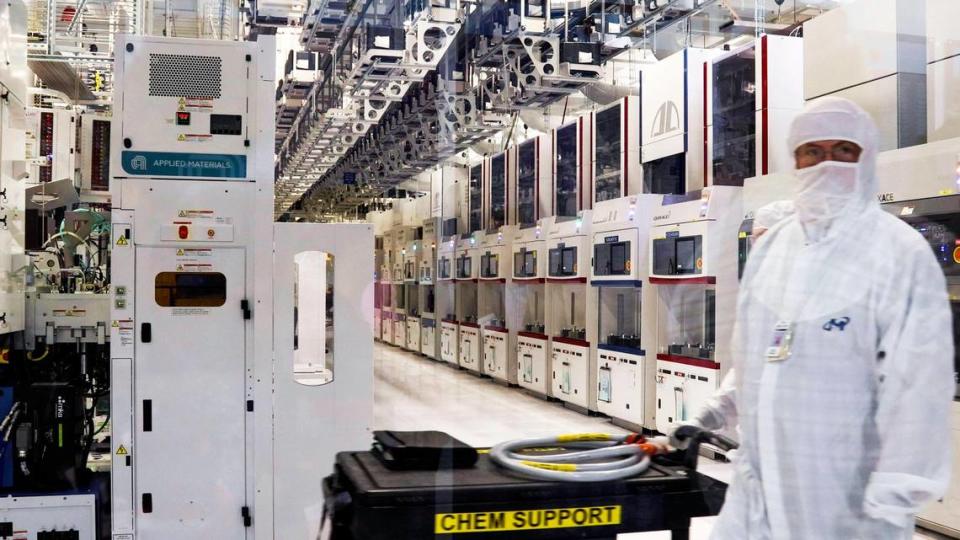
Megaprojects strain labor pool
Micron knew the project could strain the state’s reserves of construction workers and tradespeople, and Gatzemeier said the company is working to attract more people from Washington, Oregon, Utah and Montana through “competitive wages” and a labor agreement offering benefits.
“There’ll be a large opportunity for people to come here from out of state,” Gatzemeier said. “That’s one of the reasons why we went into the (labor agreement), to attract labor from outside of the state, to not put as much pressure on the Boise trades market.”
The company has hammered out an additional $75 million community investment framework, and also created a certified “earn and learn” apprenticeship program, with the College of Western Idaho.
Micron started the Northwest University Semiconductor Network to boost the workforce. The network aims to bolster education in the semiconductor industry and partnered with 13 universities including Oregon, Oregon State, Washington, Washington State, Montana State, the University of Utah, Boise State and the University of Idaho.
“We need to increase the labor pool and tap into all the talent that’s available for us to be able to do this,” he said.
Gatzemeier said there is tougher competition in the industry because of the increase in fabs that have been announced across the country since the government passed the CHIPS Act.
“It’s going to be tight,” he said.
Fears mount for Idaho construction industry as billion-dollar mega-projects move forward
Meta, formerly Facebook, plans to build a big center in Boise area. What we know
Electricity-hungry industry wants lower power costs. Would Idahoans have to pay for it?
Exclusive: Micron CEO reveals new details about Boise plant, plans for housing workers

